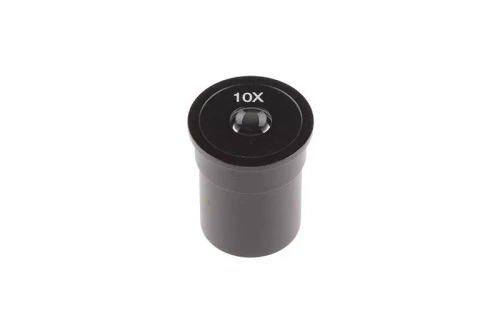Microscope objective lenses
The microscope objective is the most important part in a microscope, the quality of the image that can be seen with this device really depends on it. It is mainly the objective lens that is responsible for the magnification of the object under observation and allows you to get a sharp image of the object.That is why it is so important to have a high-quality component.
Types of microscope objectives
Microscopes could not be successful in observing various types of objects if it were not for their optical system, which includes eyepieces and lenses. The objective of a microscope is available in several types, which differ in the quality of the image they provide. Objectives of a weaker class usually don't allow us to conduct perfect research without defects. Such lenses are not used in professional research, but are sufficient for school or home use.
Achromatic lenses are the basic and cheapest type of lenses. They are commonly used in equipment designed for use in schools or studios. They are characterized by high image brightness and the occurrence of aberrations. Most errors are corrected in planachromatic lenses, which are equipped with additional lenses to eliminate these very errors. These are also very popular lenses that equip cheaper models or microscopes for children.
Semi-apochromatic and apochromatic lenses are much more expensive, and their high price is due to the fact that they are high-end products in which defects have been basically eliminated. They are used in professional microscopes.
Microscope objective - the most important parameters
How good a quality image you will be able to see under the microscope, and whether even the smallest details will be visible, depends mainly on the parameters of the objective lens. From its ability to focus, magnification, or numerical aperture. Before you choose a particular model of objective for yourself, you should consider what values of the following parameters you will need.
Magnification of the objective
This is the most important parameter in an objective lens, because the magnification determines how small objects and how much detail you will be able to see through the microscope. The range of magnifications in microscope lenses is very large and can be from 1x to even 100x.
Numerical aparature
Numerical aperture may be a new term to many of you. However, it is so important that you need to know it before you choose a lens for yourself. The numerical aperture determines the optical resolution of a lens. The higher this value is, the more details of the observed object you will be able to see. Aperture depends heavily on the magnification and class of optics in the objective lens.
Which objectives are the best?
The parameters described above are the most important in lenses, but they are not the only features that characterize them. When looking for an objective for yourself, you may also come across such terms as optical length, paracentricity, or parfocality. However, these are more influenced by the construction of the lens than by its optical properties.
The objectives may look very similar, but they can differ quite a bit. So which model should you choose? First you need to think about the purpose of using your microscope, what you intend to look at with the help of it. If you need it for professional analysis of microbiological preparations, such as animal, plant or human cells, then you will need an objective lens with high magnification, higher aperture and very good quality, i.e. semi-apochromatic or apochromatic.
For home use, cheaper lenses are most often chosen: achromatic or planachromatic. You can adjust their magnification to suit your observations in any way you like. These objectives perform very well in amateur use.

- Brand: OPT
Microscope Eyepiece - 10X (23mm)

- Zoom: 20x Numerical aperture: 0.40 Thread diameter standard: 20 mm Weight: 40g Material: Metal Manufacturer: Opticon
Microscope Eyepiece - 20X (20mm)

- Zoom: 40x Numerical aperture: 0.65 Thread diameter standard: 20 mm Weight: 50g Material: Metal Manufacturer: Opticon
Microscope Eyepiece - 40X (20mm)

- Zoom: 45x Numerical aperture: 0.65 Thread diameter standard: 20 mm Weight: 50 g Material: Metal Manufacturer: Opticon
Microscope Eyepiece - 45X (20mm)

- Zoom: 100x, oil Numerical aperture: 1.25 Thread diameter standard: 20 mm Weight: 50 g Material: Metal Manufacturer: Opticon




